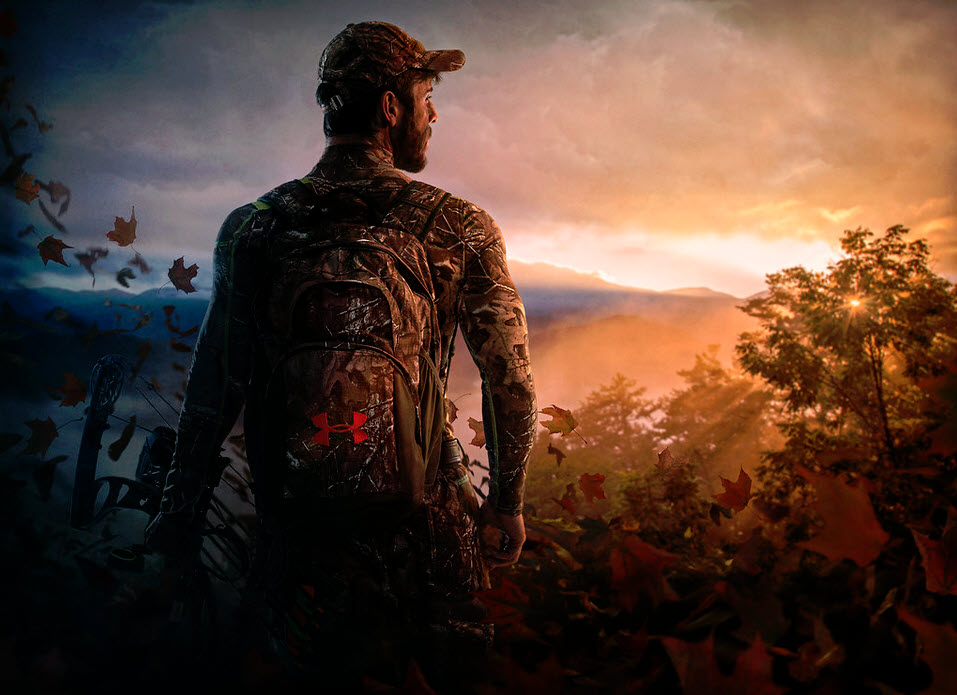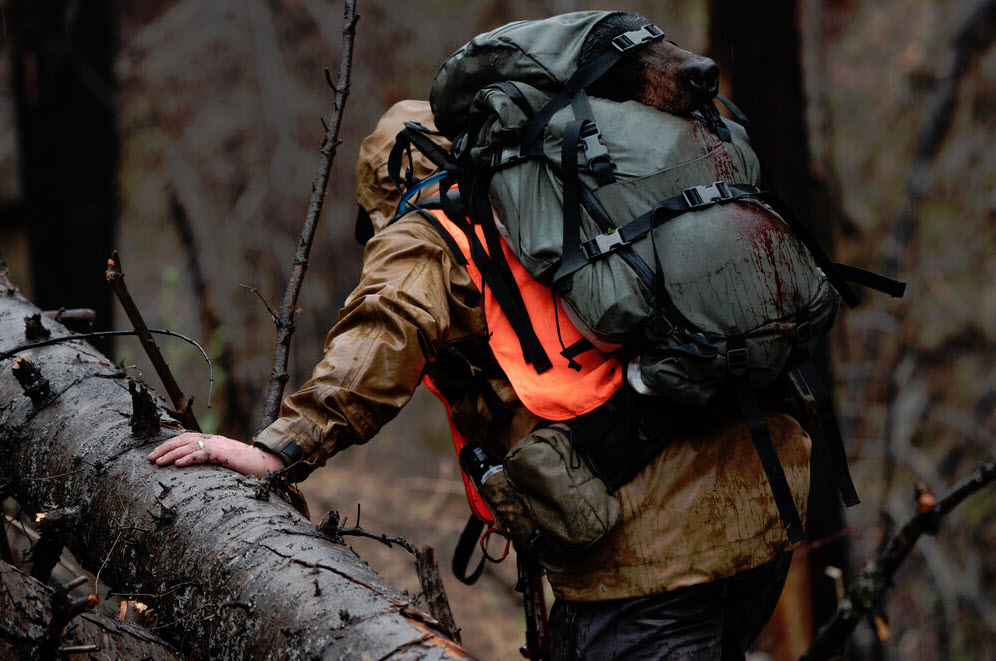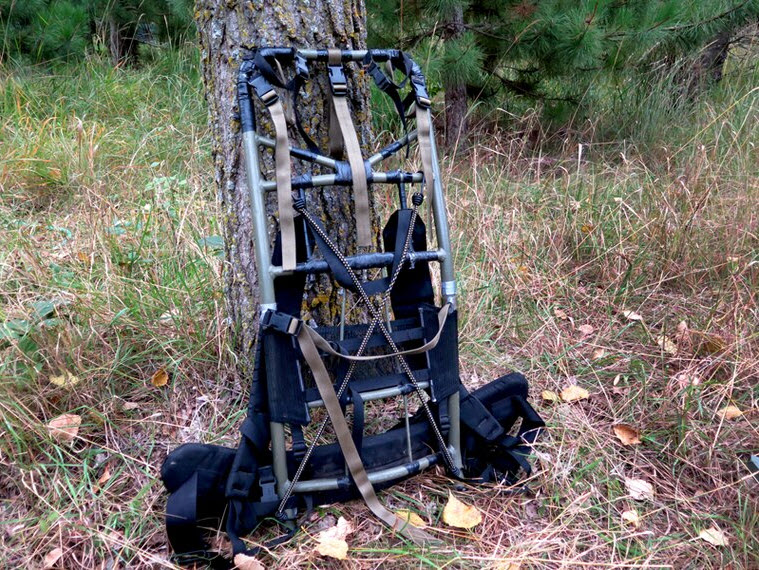
Image credits: Robert Cornelius via Flickr
If you’re determined to go backpack bow hunting, you need to spend some time selecting your backpack. Materials, features for archery hunting, and comfort are aspects to consider, and you should keep reading for the details.
Page Contents
What to check when picking a bow hunting backpack?
Even if comfortable fit and proper size are fundamental (make sure to learn about appropriate size and fitting, too), some aspects are fundamental when picking a backpack for archery/bow hunting.
Bow attachments
For many archery hunters, a backpack with bow attachment is the very first thing that they check. However, it’s more about how you prefer it; some hunters won’t necessarily look for a backpack with a bow attachment.
Our piece of advice is to check at least if the hunting backpack comes with a bow attachment or not. You will discover in time that having your hands free and finding a safe place to put the bow is difficult, especially if you’re in a hurry.
Hydration bladder
Again, experienced hunters who go backpacking know that a hydration bladder on the backpack is vital; dehydration can be deadly. While you’re checking on several backpacks for your archery hunting, try to focus only on models with hydration bladder. At least try to find models that provide enough space to take a hydration bladder that you can buy separately.
Carrying space
When you’re hunting, the length of your hunt and your level of experience as a backpack hunter will count a lot when selecting the capacity of your hunting backpack. Some archery hunters prefer to hunt light and won’t mind a small carrying space for the pack.
Weight
Again, you will decide which load weight to carry on your back for hunting. Some hunters like to hunt light, so they will pay much attention when packing. Others will want to be prepared for all sorts of situations and carry a heavy load (and not necessarily having to use everything in the backpack).
Single-day or multi-day backpacks? How to choose?
Inexperienced bow hunters who go backpacking will need many criteria when selecting the backpack; the length of their hunt is one criterion to use:
Single-day packs
Day backpacks are popular among bow hunters because they can fit everything you need for bow hunting.
Go with a single-day backpack when you’re going to be bow hunting for a day or two. Three thousand five hundred cubic inches is the typical capacity for single-day packs; you will be able to pack your essential gear and clothing.
Single-day backpacks aren’t too big and will allow comfortable carry even for long distances.
Here are some elements to check when selecting:
Weight
It’s better to carry a low-weight backpack when you cover long distances. Even if two pounds doesn’t seem like a lot at home, they can make the difference after walking for 8 hours on a cold and rainy day.
Bow holder
The bow holder is fundamental for bowhunters who go backpacking. The bow holder lets you carry the bow safely, without the bow bumping and swaying. We all know that it becomes disturbing after a couple of hours.
Multi-Day Hunting Backpacks
You will have more space to store your gear, essentials, and all items when you choose a multi-day backpack. There’s also the risk of overloading and overpacking, especially if you’re not experienced. It would help if you started making a list of what you plan to put in your backpack for archery hunting. We will help you with that list down below, though.
Hammock, underwear, socks, sleeping bag, and food will fit perfectly in a multi-day backpack. Make sure to keep it still lightweight as you still need to cover longer distances when archery hunting.
What should you pack in your archery/bow hunting backpack?
You don’t need to be an experienced bow hunter to know that preparation is fundamental for successful hunting. Meticulously planning and making a list of what you’re going to carry in your bow hunting backpack will give you a better chance of getting that shot right. Feel free to customize our list according to your specific needs and preferences.
Hunting license
If you’re new to bow hunting, you should enroll in a bowhunter education course before purchasing the license. There are several benefits when purchasing the license, and one is that the fees will return into wildlife conservation. It’s how you can help future generations also to enjoy hunting.
Some hunters will raise an eyebrow for putting down the hunting license on the list, but we all know that, when in a hurry, you may forget even the basics.
Binoculars
Binoculars will help you identify the game in the distance or find the prey in a hidden area close to you. There are several types of binoculars to buy, and you should choose according to your place of hunting. You will need binoculars with better magnification for open areas and a less magnification model when hunting in dense and wooded regions. Don’t hesitate to ask a professional at the archery shop for guidance when selecting your binoculars.
Knife
Even if you hunt with a bow, you can never go hunting without your knife. You can use it for many things; you can’t leave without having one in your backpack.
Rangefinder
You will get a precise shot when you know the accurate distance to the target, and a range finder can do that for you. When you’re hunting from a tree stand or a hilly zone, you should use an angle-compensating rangefinder. The tool will do trigonometry to measure the angles and provide you the correct distance to your target.
Arrows drop considerably at different distances; it may not sound like a lot, but the difference between 40 and 45 yards is a lot when it comes to the arrow’s impact.
Navigation
You don’t want to get lost when hunting and always pack at a couple of means for navigation, especially if there’s a long hike to the hunting spot. Pack a map, GPS, and compass to make sure you find your way back home one way or another.
Spare Release
Even the most experienced hunters forget things; we’re sure that the number of hunters who got to the range without the release aid isn’t null. You don’t want to go back home, so always carry a spare release in the hunting backpack. If you forget the release or do not work correctly, you may still hunt because you took a backup.
Headlamp/Flashlight
Even if you plan on coming back home before it gets dark, you can never be too sure. Always carry a headlamp or a flashlight when hunting. It will save you a lot of time when you hike to the treestand/blind and saves you time.
A headlamp/flashlight will help you get to and from the hunting spot; remember to carry extra batteries too.
Layers of clothing
Hunting teaches you many things, and one of these things is that you need to layer your clothes so that you don’t get sweaty and ineffective. Walking to the hunting spot with minimal layers is the recommended method; it’s the best way to reduce sweating risk. Once you get to your stand, you should put on a couple of warmer layers.
It’s essential to stay warm when hunting; you want to enjoy the moment and spend as much time as possible.
Water and Snacks
No matter how short your hunt will be (or anticipate), you should always pack water. When you manage to take that shot, you will sweat a lot while bringing the deer out of the woods. You will still appreciate a drink of water after all that effort.
You don’t want to turn into a “hangry” hunter either, so make sure to pack snacks that give you energy and help you stay focused on your hunt. You can get distracted when you’re hungry and thirsty at the same time.
Field Dressing Kit
You go hunting thinking that you will be successful; mental preparation is necessary for physical preparation. Always throw a field dressing kit in your archery hunting backpack. Make sure to add the rubber gloves, the sharp knife, and a bone saw.
You will need to rubber gloves for field dressing your game to remain safe and clean. If you forget the gloves, check the first aid kit; it may have a pair of gloves.
Flagging Tape
You will need to mark the blood trail with flagging tape when you’re blood trailing. You may use it also for highlighting the route to your tree stand.
Flagging tape is a brightly colored vinyl material and comes in rolls; you should be able to find it at the archery store.
Rain gear
Even if there is no rain in the weather forecast, you can never be too sure. Rain gear is one of the items that you won’t regret having. You won’t be able to sit in the tree stand for very long if you’re soaking wet.
First aid kit
It’s easy to overpack when archery backpack hunting, but it’s better to have some items on you, especially since they can make the difference between life and death. Plus, some essential gear doesn’t even add much weight nor take a lot of space in your pack.
Therefore, you should always pack a first aid kit and several meds that could be useful in emergencies.
Matches
Matches don’t weigh much and barely take space in your backpack; at the same time, they can be a lifesaver if you have to spend the night in the woods. Look for waterproof and windproof matches; staying warm is crucial in the woods.
Toilet paper
Some hunters aren’t shy to use leaves, whereas others won’t leave the house without toilet paper. If that’s the case for you, roll a couple of layers in a plastic bag. Don’t take a whole roll if you’re not going on a 7-day hunt trip.
Instead of a conclusion
How many gear and items you pack depends on many things, and you will learn in time what are your actual needs when archery backpack hunting. Your hunting style, intended quarry, and location will matter a lot when packing. If you feel it’s too much information, you can always ask a hunter friend or a professional at the archery store.








